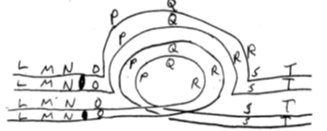#Question id: 9273
#I Life Science/ Life Sciences Group – I-V
In the higher excited state, chlorophyll is extremely unstable; it rapidly gives up some of its energy to the surroundings as heat, and enters the lowest excited state, the excited chlorophyll has four alternative pathways for disposing of its available energy: fluorescence, Heat loss, energy transfer, photochemistry; all process takes place in which wavelength,
#Question id: 9273
#SCPH05 I Biotechnology
In the higher excited state, chlorophyll is extremely unstable; it rapidly gives up some of its energy to the surroundings as heat, and enters the lowest excited state, the excited chlorophyll has four alternative pathways for disposing of its available energy: fluorescence, Heat loss, energy transfer, photochemistry; all process takes place in which wavelength,
#Question id: 9273
#SCPH06 I Botany
In the higher excited state, chlorophyll is extremely unstable; it rapidly gives up some of its energy to the surroundings as heat, and enters the lowest excited state, the excited chlorophyll has four alternative pathways for disposing of its available energy: fluorescence, Heat loss, energy transfer, photochemistry; all process takes place in which wavelength,
#Question id: 9275
#I Life Science/ Life Sciences Group – I-V
The colour of carrots, is due to;
#Question id: 9275
#SCPH05 I Biotechnology
The colour of carrots, is due to;
#Question id: 9275
#SCPH06 I Botany
The colour of carrots, is due to;

